In this post we look at 5 of the most effective home exercises for your lower body. No equipment required.
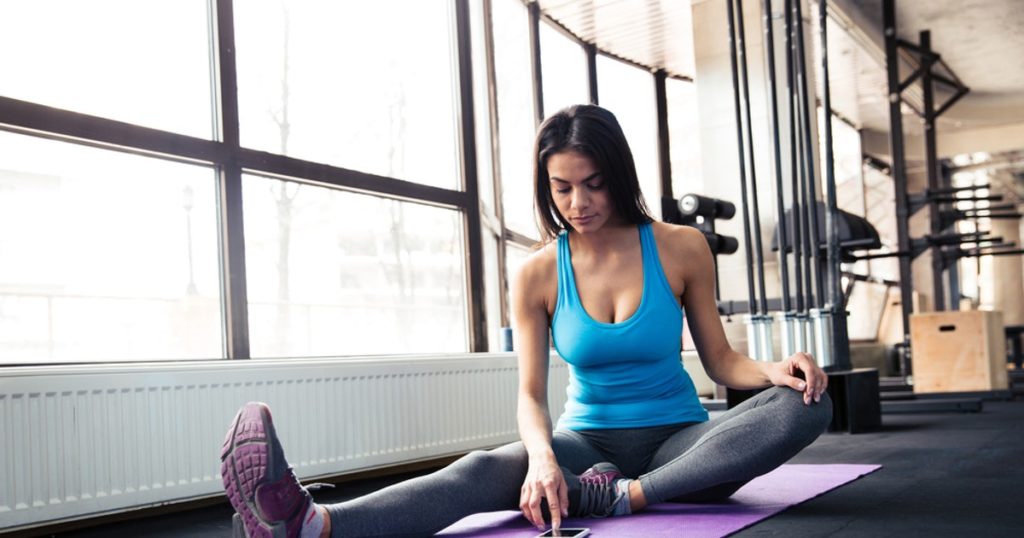
I encourage all of my clients to join a gym as their treatment progresses and they get stronger.
There are always a few that won’t however, so we find a work around.
At this difficult time when I know many of you won’t be able to go to the gym, I thought I’d share 5 of the most effective home exercises for your lower body.
The 5 best lower body home exercises
The problem with many home exercises is that they don’t provide enough of a challenge to stimulate strength gains.
These exercises have been selected to do just that.
Side lying hip abduction
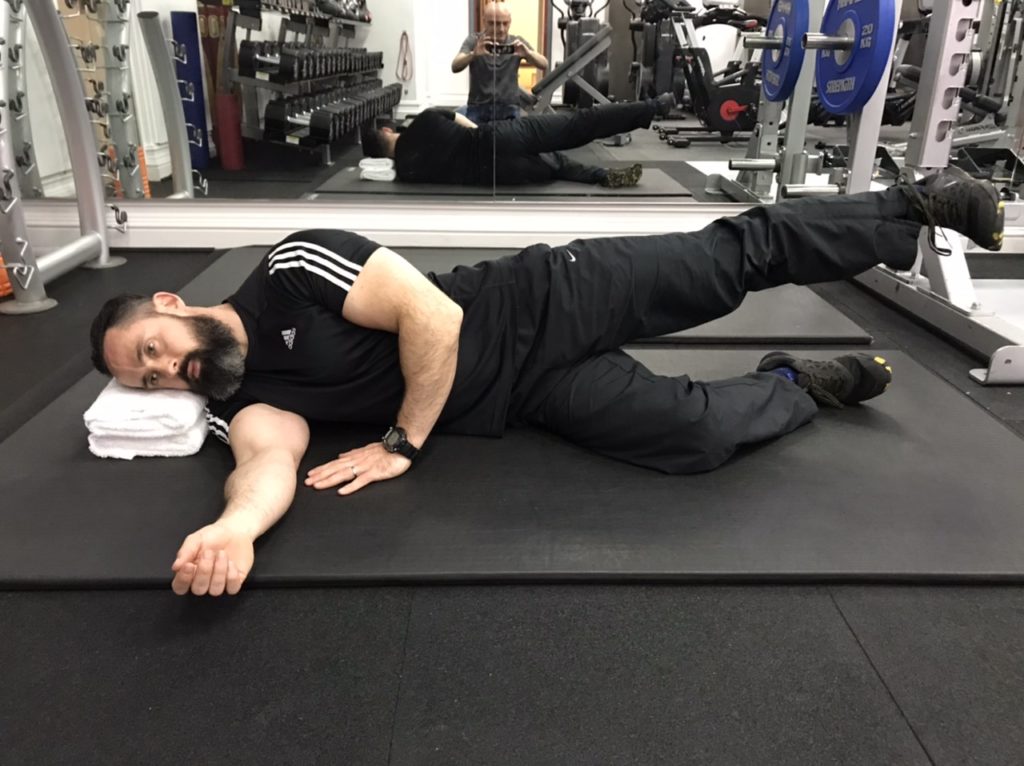
Remember Jane Fonda? She used to pull out 100s of these during those 80s workout videos. Respect.
This exercise is definitely not as easy as it looks.
Lay down on your side with your bottom leg bent at the knee. Have your head supported and place a hand on the top of your pelvis to monitor for any movement.
Lock out your top knee and slowly start to lift your leg.
Make sure the leg doesn’t move forwards into hip flexion as you lift and that your pelvis doesn’t move up towards your rib cage.
Once you reach the top position pause for a second before slowly lowering the leg back down towards the floor.
Again monitor your pelvis and stop before it begins to move down towards your feet.
If you get to 10 you’re doing well.
Single leg calf raises
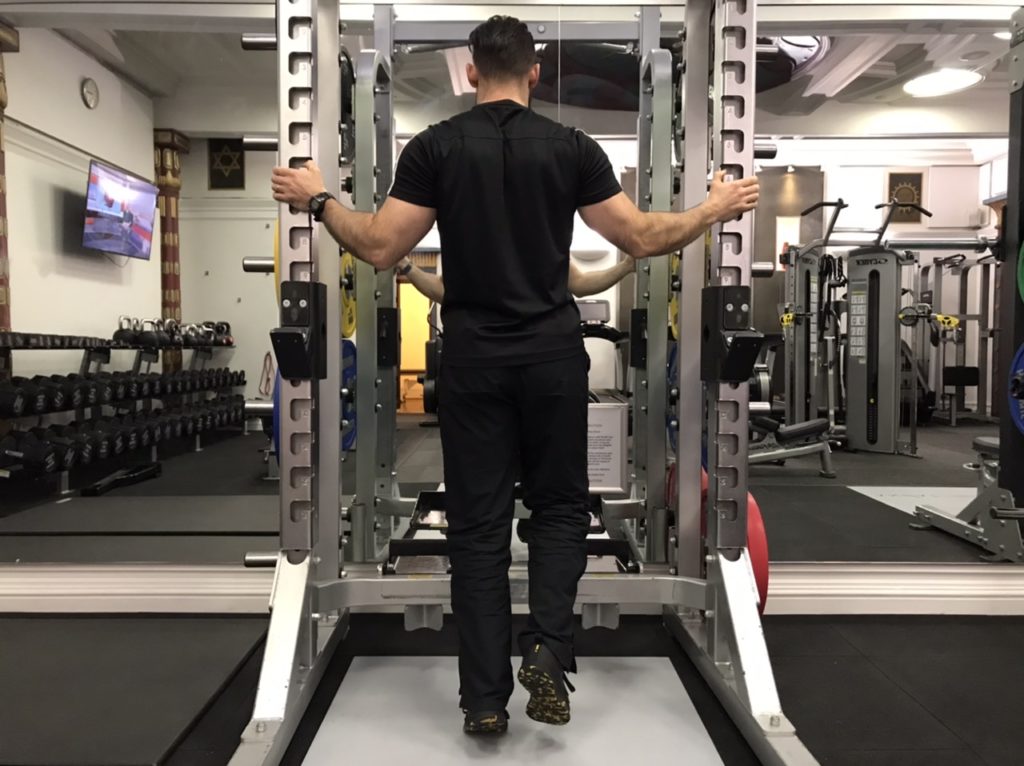
Stand face on to wall or the back of a chair. Shift your weight on to one leg and slowly start to lift your heel off the ground.
Make sure you keep the knuckle of your big toe in contact with the ground and lift the arch of your foot as high as possible.
Hold the top position for a second before slowly lowering your heel back down to just above the floor.
Maintain a small bend in your knee throughout and keep your weight over the working leg.
Below are some norms for this exercise from this paper to add a little motivation.
20-29 years Males 37 reps Females 30
30-39 years Males 32 reps Females 27
40-49 years Males 28 reps Females 24
50-59 years Males 23 reps Females 21
60-69 years Males 19 reps Females 19
70-79 years Males 14 reps Females 16
80-89 years Males 10 reps Females 13
If my test was predictive of age, I should be retired and living on the south coast. Damn!
Straight leg hold
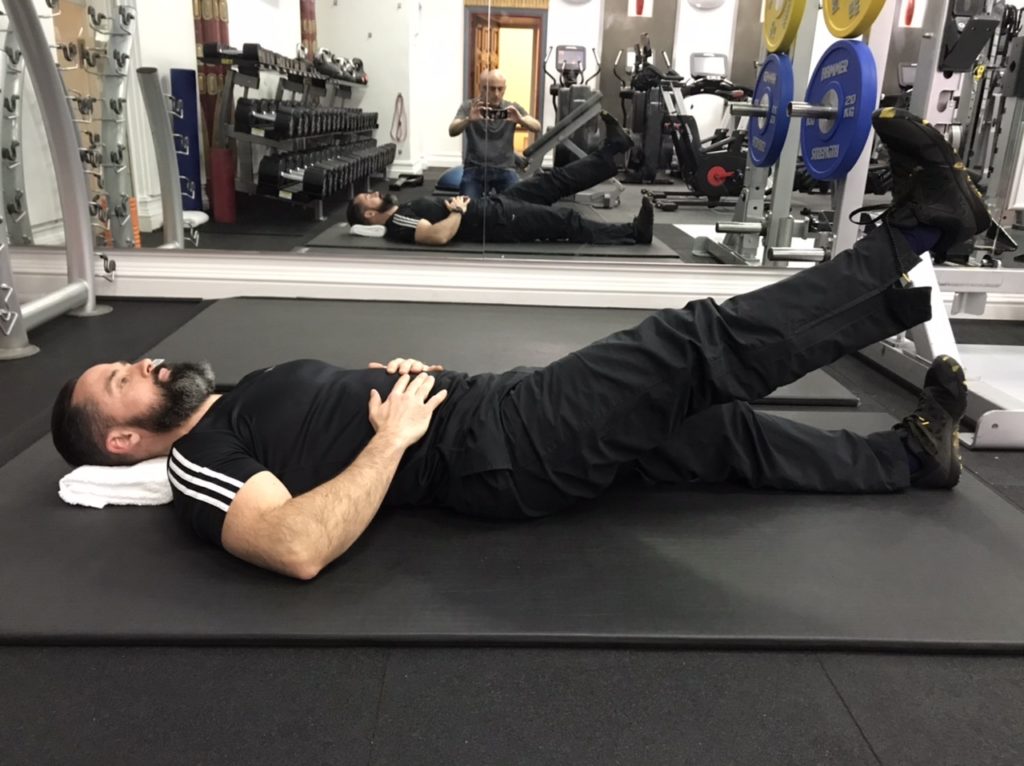
Laying on your back, lock out a knee and lift your leg a few inches off the floor.
Hold the leg still for 10 seconds before lowering back to the floor. Make sure your knee doesn’t bend.
Focus on generating as much tension as possible in your thigh muscles.
Repeat a further 5 times.
Standing knee flexion
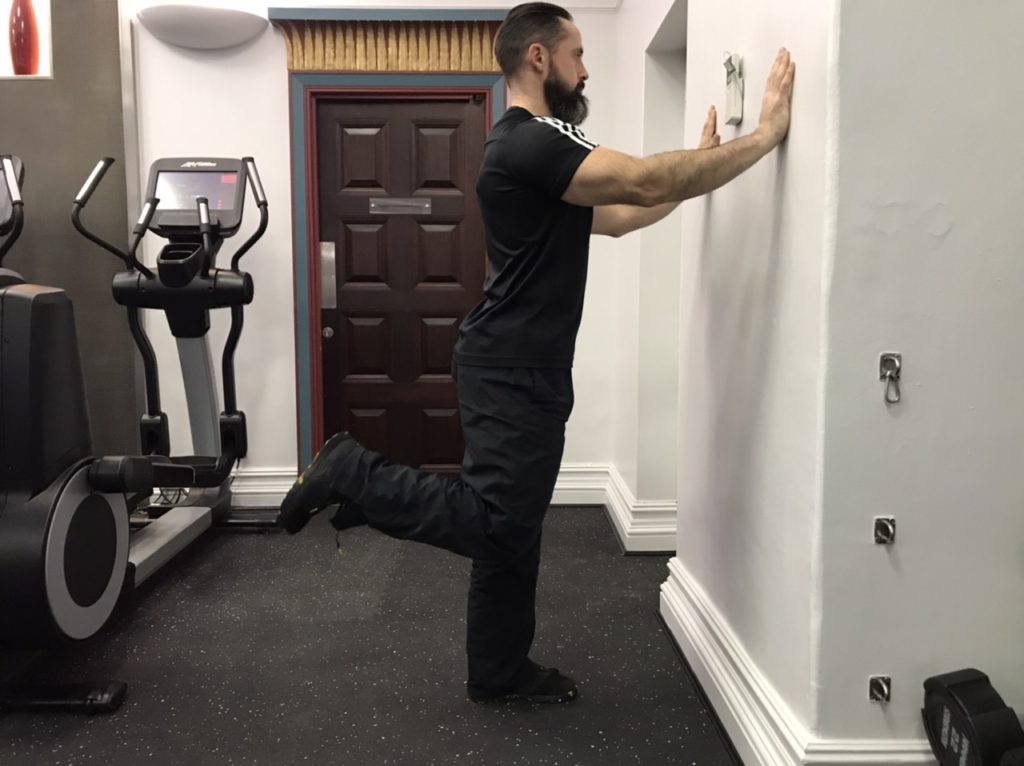
Stand facing a wall and bend up one knee as far as it will go without allowing your hip to move forwards.
Hold for 10 seconds before lowering your foot to the floor. Repeat a further 5 times.
Two part squat
We’re going to break the squat up into two parts so we can get a meaningful challenge to each part of the range.
Part 1
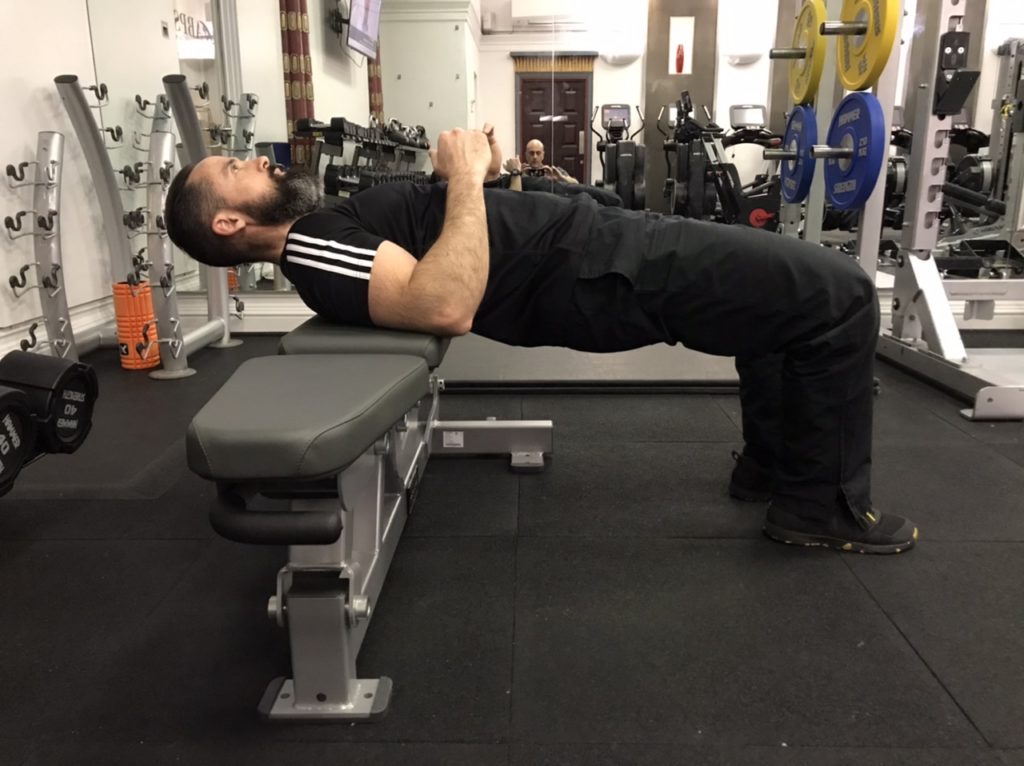
First we’ll challenge the last few degrees of hip extension.
Here we’re using a bench, but this exercise can just as easily be performed from your couch or something similar.
Lay back with your shoulders supported on whatever piece of furniture works best.
Have your knees bent to 90 degrees and make sure you have decent grip with your feet.
Squeeze your butt and lift your pelvis towards the ceiling.
Hold the top position for 10 seconds before slowly lowering to the point where your shoulders begin to lift from the couch.
Repeat a further 5 times.
Part 2
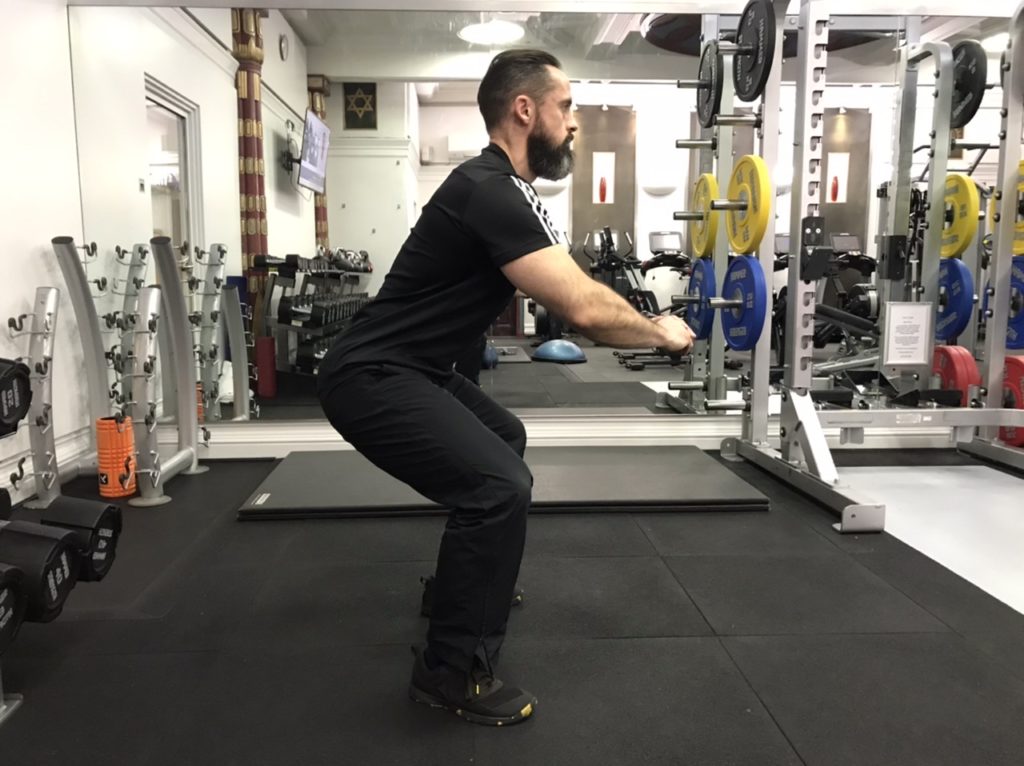
Stand with your feet a comfortable distance apart and your knees pointing in the general direction of your toes.
Slowly begin to lower into a squat position keeping your chest up.
Many people make the mistake of going too deep when they squat. This post will help you assess exactly how deep you should go.
For a general guide monitor your lower back as you descend. When you are unable to keep it extended (arched), stop.
Once you’ve arrived at the bottom position, hold for a second and gently push out with your feet. This will create a further stimulus to your glutes as you slowly begin to move half way back up.
Remember we’ve already trained the top section in the exercise above.
Repeat until you feel mild fatigue in your butt and thigh muscles.
Summary
Whilst the gym is the optimal solution for getting stronger, these exercises will have you making some gains during this difficult period.
In the next post we’ll look at the best home exercises for your trunk and upper body.